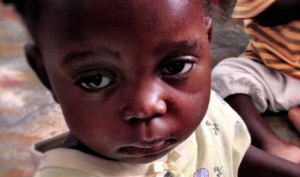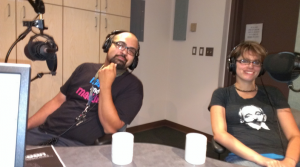Click for the full audio story:
haiti final
Today we meet a midwife that is going to Haiti, and the film crew following her.
Jennifer Hoadley has been a labor and delivery nurse for six years. Not long ago, she was communicating by text with one of her nursing colleagues, who at the time was working in Haiti. The nurse was dealing with a child with low blood sugar, and wanted to know how much of a specific IV fluid to give.
“I was telling her how much to give and then realized that she didn’t have the correct IV solution, she didn’t have an IV pump, she didn’t know how to calculate IV drip rates, they didn’t have the proper medication to give the baby when it had a seizure, and it all just kind of came to me that they really don’t have any resources to take care of sick babies,” says Hoadley. And that was the moment she decided one way or the other, she was going to Haiti.

“It’s just one of those things that when you read about it and start seeing just how bad it is and you know you have something you can offer to make a small difference… It just sparked something inside me that got the ball rolling on this,” says Hoadley. And, the more she read, the more she was disturbed by the dismal statistics Haitian women and children were suffering from.
“Haiti has the worst maternal child health outcomes in the western hemisphere. They have upwards of an 11 percent neonatal death rate which is just absolutely unheard of,” says Hoadley. The neonatal death rate is the number of live infants that die before their first 28 days. Hoadley says an 11 percent death rate is beyond comprehension for someone living in the United Sates.
“If you ask a labor and delivery nurse ‘have you seen a neo natal death in your career?’ it’s two or three if they work in a normal hospital setting. In six years I’ve seen one,” says Hoadley. There are lots of reasons why the death rate is so high for Haitian babies, and for their mothers. Lack of checkups, proper medicine and the fact that 85 percent of women in Haiti give birth without any prenatal care are just a few.

“They don’t have anybody in their village that provides prenatal care. They don’t’ have a medical school. Their government is so corrupt and broken right now that they don’t have much of an education system at all. And especially for poor people, there’s nothing,” says Hoadley.
Hoadley initially thought she might raise money for a group she discovered called Midwives for Haiti, but instead she decided to fundraise a plane ticket for herself. That way she could volunteer her time and skills as a nurse to the nonprofit. “I mean it would take millions of dollars to dump into a system like this to fix it. The solution is to go there and teach and to leave behind knowledge because that’s everlasting; I give it to one person, that person gives it to another person,” she says.
Gathering the money for her trip will be just one of Hoadley’s hurdles. She’ll also be traveling to a place that isn’t exactly safe. The United States government calls the threat level in Haiti “critical, in the areas of crime and political violence.”
“There have been kidnappings and murders. There is disease; HIV is very common in Haiti. Typhoid and Cholera are currently at epidemic proportions right now. So sure, there’s risks associated with it but you just kind of have to put that in the back of your mind and just move forward. You can’t be afraid to make a difference. You can’t be afraid to do what feels right,” says Hoadley.
And, she won’t just be volunteering while she’s in Haiti, she’ll also be co-producing a documentary about her trip to help raise awareness about the countries lack of prenatal health care. For that, she’s teamed up with Bryant Mainord, the president of the Alaska Film Forum.
“For a project like this to work, the driving force has to be someone like Jenn; someone who isn’t doing it for the money or the press or anything like that. It’s something that’s going to get done whether or not the film gets made. It’s an honest passion project, and we as the Alaska Film Forum are very proud to be a part of it,” says Mainord.
Mainord says the documentary’s goal is to do more than just paint a bleak picture from the outside looking in.
“The way we wanted to handle that was not just by bashing people over the head with these images. We wanted to make all of the scenes count, and immerse people in the story in such a way that they feel like they’re there because they’re watching relatable characters react to everything you see. So it’s not just like watching an infomercial, where you emotionally detach,” says Mainord.
And Jenn Hoadley, the protagonist for our story, already has a clear message in mind for the movie. “My biggest thing is I just want to inspire anybody to not ignore your passions. You can’t walk idly through this life. You have to find the things that inspire you and make you happy, and really at all costs you have to figure out what fulfills you and do it.”
A video outlining the project:
More info at http://alaskafilmforum.org/m4h-doc/
Dave Waldron began his radio career in 2000 as a volunteer DJ at UAA’s radio station KRUA 88.1, where he hosted a weekend music show. In 2004 he was hired as the station’s music director, and held the position until his graduation in 2007. He was hired by Alaska Public Media in 2008 and since then has worked as an audio engineer, editor, and producer. He currently runs his own small business AK Audio Pro, and is a host of Alaska Public Media’s Hometown, Alaska.




